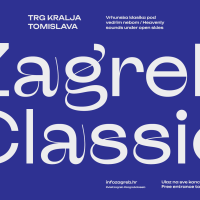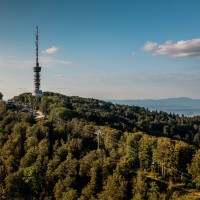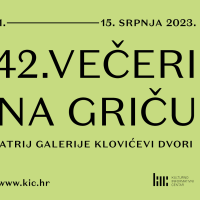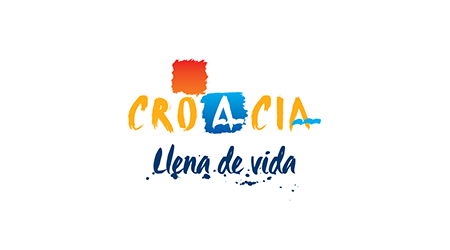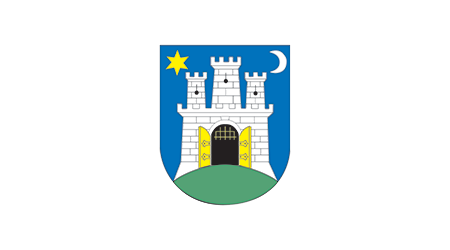Croatian Origins of European Culture
The representative exhibition “Slavonia, Baranja, Srijem – Sources of European Civilization” which remains opened until 2 August at the Klovićevi Dvori Gallery, presents the impressive cultural wealth of the easternmost region of Croatia, where the Bronze Age is believed to have marked a new era in the development of human civilization.
 The representative exhibition “Slavonia, Baranja, Srijem – Sources of European Civilization” is now open at Klovićevi Dvori Gallery. Close to two thousand exhibits which span a long period in the history of human development, from pre-historic times to the present, stand witness to the exceptional wealth of this region of Croatia and illustrate the origins of modern European culture. This corner of Croatia is believed to be the cradle of copper ore processing, the place where the first copper alloys on the soil of Europe were made by the so-called Vučedol Culture, the custodians of the new age. The origins of the Vučedol Culture date back to the period between 3,000 and 2,200 B.C. It derived its name from the locality of Vučedol, five kilometers from the city of Vukovar. The discovery of a copper smelting kiln and molds for manufacturing tools at this archeological site have confirmed that the Vučedol culture opened a new chapter in the history of human civilization in Europe, contemporaneously with the Bronze Age developing in Mesopotamia, ancient Egypt and China.
The representative exhibition “Slavonia, Baranja, Srijem – Sources of European Civilization” is now open at Klovićevi Dvori Gallery. Close to two thousand exhibits which span a long period in the history of human development, from pre-historic times to the present, stand witness to the exceptional wealth of this region of Croatia and illustrate the origins of modern European culture. This corner of Croatia is believed to be the cradle of copper ore processing, the place where the first copper alloys on the soil of Europe were made by the so-called Vučedol Culture, the custodians of the new age. The origins of the Vučedol Culture date back to the period between 3,000 and 2,200 B.C. It derived its name from the locality of Vučedol, five kilometers from the city of Vukovar. The discovery of a copper smelting kiln and molds for manufacturing tools at this archeological site have confirmed that the Vučedol culture opened a new chapter in the history of human civilization in Europe, contemporaneously with the Bronze Age developing in Mesopotamia, ancient Egypt and China.
In addition to the secret processing of copper ore, the production of ceramic pottery holds a special place in the Vučedol culture, together with many other ancient crafts. The population of Vučedol could also use a calendar. The cultural wealth of this region of Croatia is in stark contrast with its rather unassuming size. An important part of heritage, the first Indo-European calendar, was found here, and new scientific data, particularly linked to the early Medieval Ages, were unearthed during the preparation of the current exhibition. As many as 133 scientists with different specialties were involved in putting together the impressive collection of exhibits from a total of 128 different museums, churches, monasteries and private collections. The demanding and challenging project, which was initiated by the Ministry of Culture of the Republic of Croatia and executed in cooperation with the Klovićevi Dvori Gallery, continues the cycle of great exhibitions themed around the cultural heritage of different Croatian regions.
After the last such exhibition, “Dalmatian Zagora – an Unknown Land”, visitors to this current exhibition have the opportunity to learn about life as it once was in the regions of Slavonia, Baranja and Srijem. The exhibition remains open until 2 August this year.
Published: 06.05.2009
 Hrvatski
Hrvatski English
English Deutsch
Deutsch Spanish
Spanish French
French Italian
Italian Russian
Russian Korean
Korean Japanese
Japanese Chinese
Chinese The representative exhibition “Slavonia, Baranja, Srijem – Sources of European Civilization” is now open at Klovićevi Dvori Gallery. Close to two thousand exhibits which span a long period in the history of human development, from pre-historic times to the present, stand witness to the exceptional wealth of this region of Croatia and illustrate the origins of modern European culture. This corner of Croatia is believed to be the cradle of copper ore processing, the place where the first copper alloys on the soil of Europe were made by the so-called Vučedol Culture, the custodians of the new age. The origins of the Vučedol Culture date back to the period between 3,000 and 2,200 B.C. It derived its name from the locality of Vučedol, five kilometers from the city of Vukovar. The discovery of a copper smelting kiln and molds for manufacturing tools at this archeological site have confirmed that the Vučedol culture opened a new chapter in the history of human civilization in Europe, contemporaneously with the Bronze Age developing in Mesopotamia, ancient Egypt and China.
The representative exhibition “Slavonia, Baranja, Srijem – Sources of European Civilization” is now open at Klovićevi Dvori Gallery. Close to two thousand exhibits which span a long period in the history of human development, from pre-historic times to the present, stand witness to the exceptional wealth of this region of Croatia and illustrate the origins of modern European culture. This corner of Croatia is believed to be the cradle of copper ore processing, the place where the first copper alloys on the soil of Europe were made by the so-called Vučedol Culture, the custodians of the new age. The origins of the Vučedol Culture date back to the period between 3,000 and 2,200 B.C. It derived its name from the locality of Vučedol, five kilometers from the city of Vukovar. The discovery of a copper smelting kiln and molds for manufacturing tools at this archeological site have confirmed that the Vučedol culture opened a new chapter in the history of human civilization in Europe, contemporaneously with the Bronze Age developing in Mesopotamia, ancient Egypt and China.